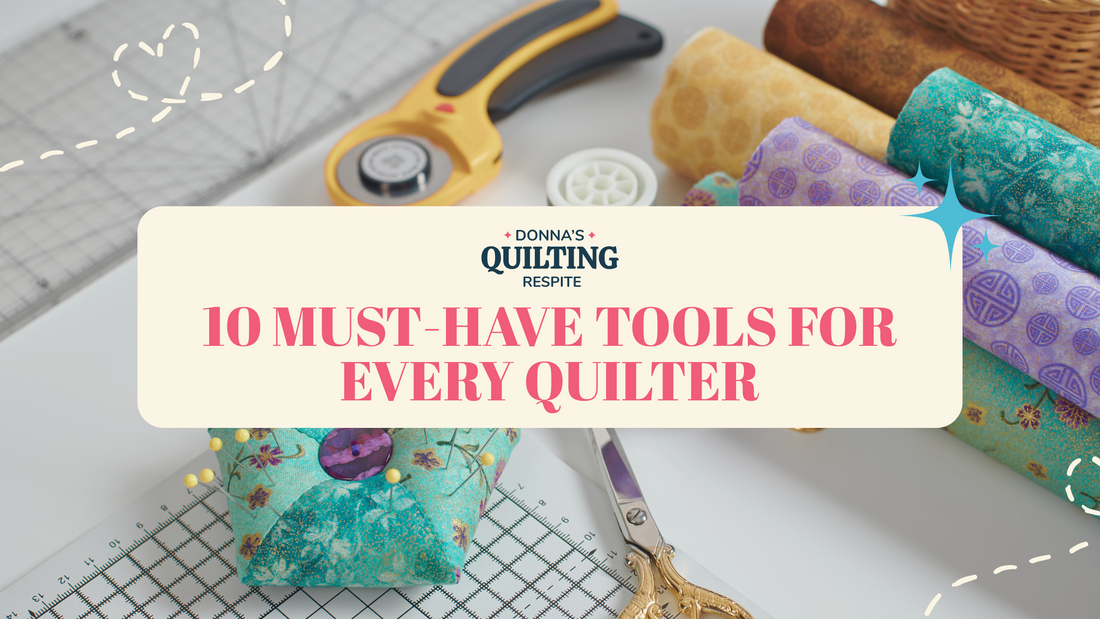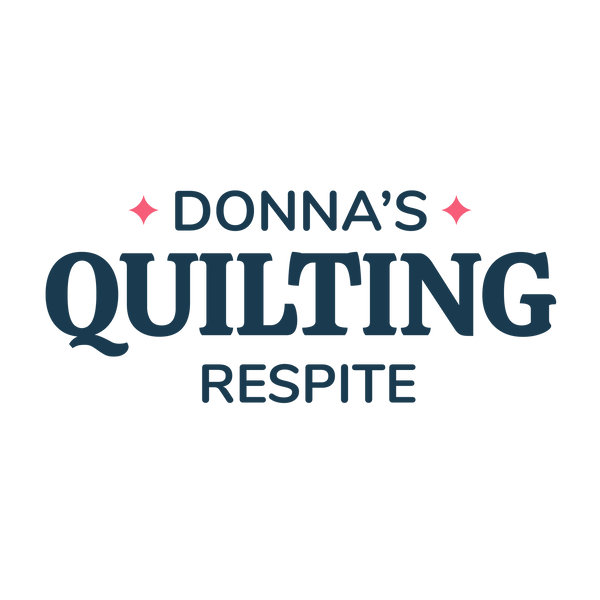
10 Must-Have Tools for Every Quilter
Share
Whether you're a beginner learning your first stitches or a seasoned quilter with stacks of finished projects, having the right tools can take your quilting to the next level. At Donna’s Quilting Respite, we believe that the right setup inspires creativity and makes the process more enjoyable.
Here are 10 essential tools every quilter should have in their toolkit.
1. Rotary Cutter
A rotary cutter is one of the most important tools in quilting. It allows for fast, clean cuts through multiple layers of fabric. Choose a 45mm or 60mm cutter for most quilting needs, and always keep extra blades on hand for sharp, precise cuts.
2. Quilting Ruler
Acrylic quilting rulers help you measure and cut fabric accurately. The most versatile size is 6" x 24", ideal for strips and squares. Look for rulers with non-slip grips and clear markings to make your work more efficient and error-free.
3. Sewing Machine
While hand quilting has its charm, a sewing machine helps speed up the process and ensures clean, even stitches. Look for a machine that offers a walking foot, straight stitch functionality, and adjustable tension settings. At our studio, we even offer machine rentals if you're not ready to invest just yet.
4. Self-Healing Cutting Mat
Pair your rotary cutter with a self-healing cutting mat to protect your table and extend the life of your tools. Mats with grid lines make alignment and cutting a breeze. A size like 24" x 36" offers plenty of space for most projects.
5. Fabric Scissors or Snips
Invest in high-quality scissors specifically for fabric—never use them on paper. A smaller pair of snips also comes in handy for trimming threads or working in tight corners.
6. Pins and Quilting Clips
You’ll need pins or clips to hold your fabric layers together. Pins work well for most tasks, but clips are a great alternative when working with thicker materials or layered quilts. Both help maintain precision during sewing.
7. Neutral Thread
A strong, high-quality thread is essential. Opt for neutral tones like white, gray, or beige that blend well with most fabric colors. Cotton or polyester threads are common favorites for durability and clean finishes.
8. Iron and Pressing Surface
An iron is crucial for pressing seams flat, which improves the look and accuracy of your quilt. A small pressing mat is great for class settings or limited space, while a full ironing board works well at home.
9. Seam Ripper
Mistakes happen! A seam ripper is your best friend when you need to undo stitches without damaging your fabric. Keep one close—it’s small, but mighty.
10. Storage and Organization
Baskets, bins, and ziplock bags help keep your fabrics, patterns, and tools organized. Labeling your supplies by project or color makes it easier to stay focused and creative.
Starting your quilting journey is exciting, and having the right tools makes it even more rewarding. Whether you're creating wall art, cozy throws, or memory quilts, these tools will support your skills and help bring your vision to life.
Looking to try a new pattern or join a class? Browse our upcoming workshops here. We’d love to quilt with you!
